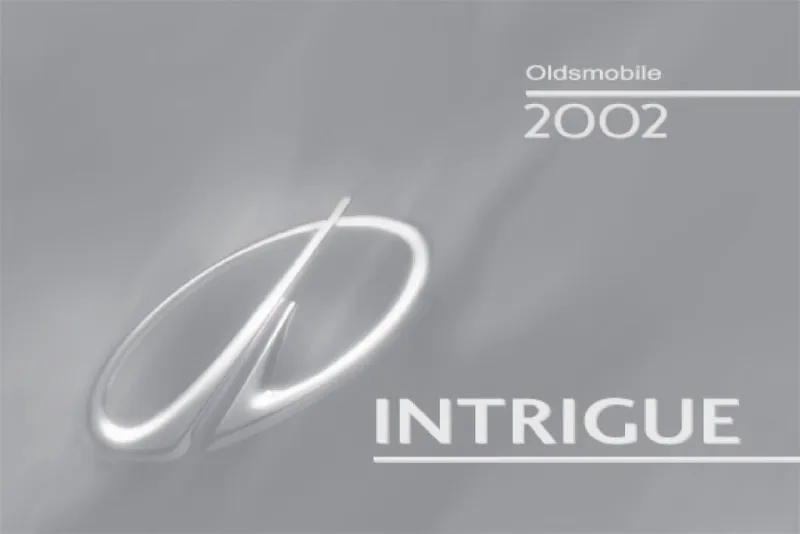2002 Oldsmobile Intrigue Owner's Manual

Table of Contents
2002 Oldsmobile Intrigue Overview
Introduction
The 2002 Oldsmobile Intrigue is a midsize sedan that embodies a blend of comfort, style, and practicality. Designed with the average family in mind, this vehicle offers a spacious interior, robust performance, and a host of features that prioritize both driver and passenger convenience. As one of the last models to emerge from the Oldsmobile brand before its discontinuation, the Intrigue showcases some of the best engineering and design principles known to the marque.
Powertrains
Under the hood, the 2002 Oldsmobile Intrigue is powered by two engine options. The base model comes equipped with a 3.5-liter V6 engine that delivers a respectable 215 horsepower and 230 lb-ft of torque, offering strong acceleration and smooth handling on various terrains. For those seeking a sportier driving experience, an optional 3.5-liter supercharged V6 engine can be selected, enhancing power and performance while maintaining efficiency. Both engines are paired with a four-speed automatic transmission, ensuring a reliable and seamless driving experience.
Trims
The 2002 Intrigue is available in three distinct trims: base, GL, and GLS. The base trim offers essential features such as air conditioning, power windows, and an AM/FM radio with a CD player, making it a great choice for budget-conscious buyers. The GL trim enhances overall comfort with added features like leather upholstery, heated front seats, and a premium sound system. The GLS trim rounds out the lineup, presenting top-of-the-line amenities including alloy wheels, advanced safety features, and a sunroof.
Features
This midsize sedan boasts a range of features designed for both comfort and convenience. The spacious cabin provides ample legroom for both front and rear passengers, complemented by a user-friendly dashboard layout. Safety features include front airbags, anti-lock brakes, and optional side-impact airbags, showcasing Oldsmobile's commitment to passenger protection. Additionally, the Intrigue comes equipped with a variety of storage compartments and cup holders, making it an ideal choice for family outings.
Owners Manual
The 2002 Oldsmobile Intrigue owners manual is a comprehensive guide that covers essential information regarding vehicle maintenance, troubleshooting, and operation. It serves as a vital tool for ensuring that owners can maximize the longevity and performance of their Intrigue. The manual includes valuable insights about scheduled maintenance procedures, warranty details, and tips for optimal fuel efficiency, making it an indispensable resource for any Intrigue owner.
User manual download
The Oldsmobile Intrigue owner manual for the 2002 model year is to be found in PDF downloadable format on this page. The owner manual for the model year 2002 is free and in English, but the repair manuals are usually not easy to get and may cost more.
Manual Questions
Fill the form below and someone will help you!
